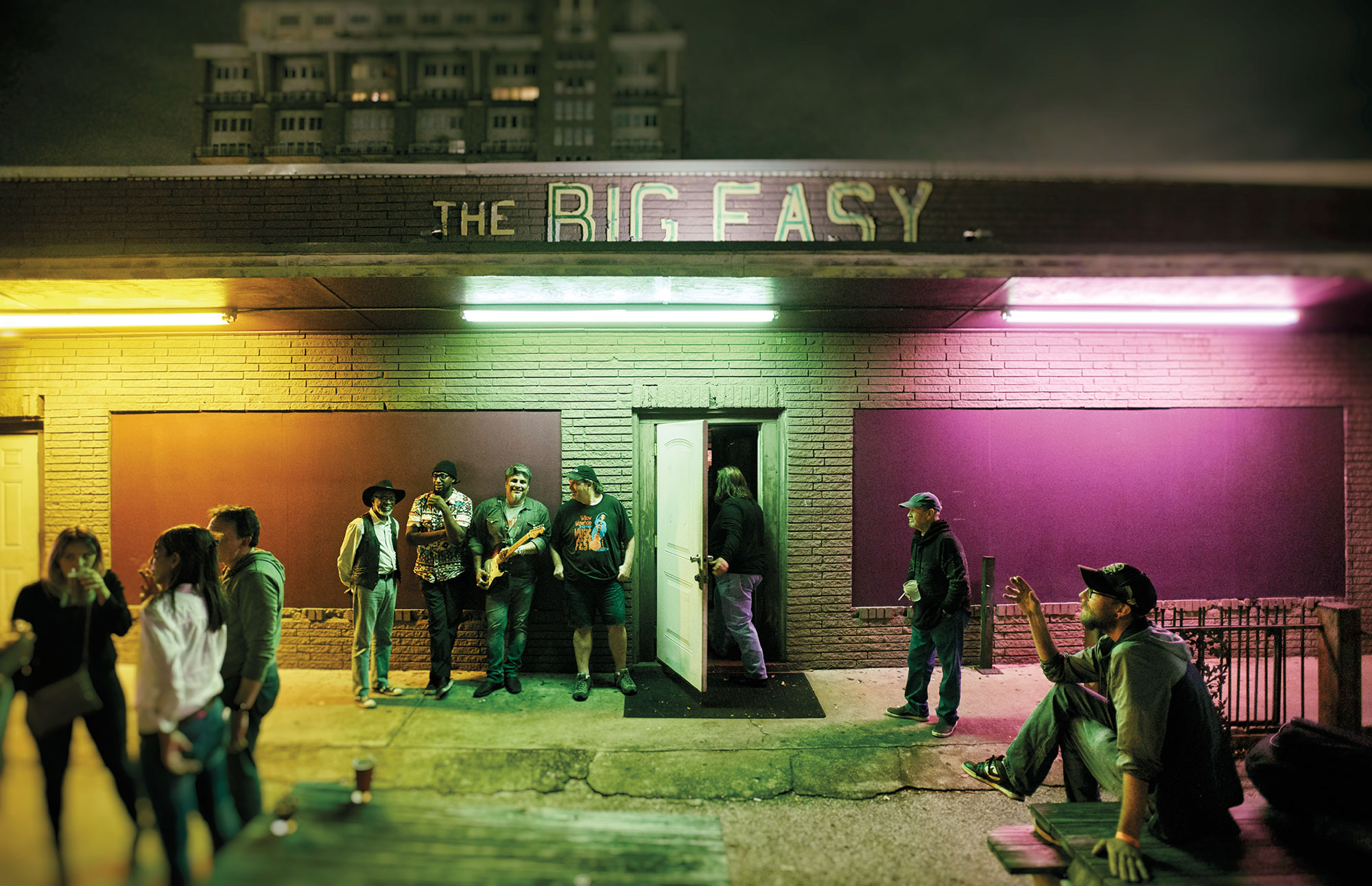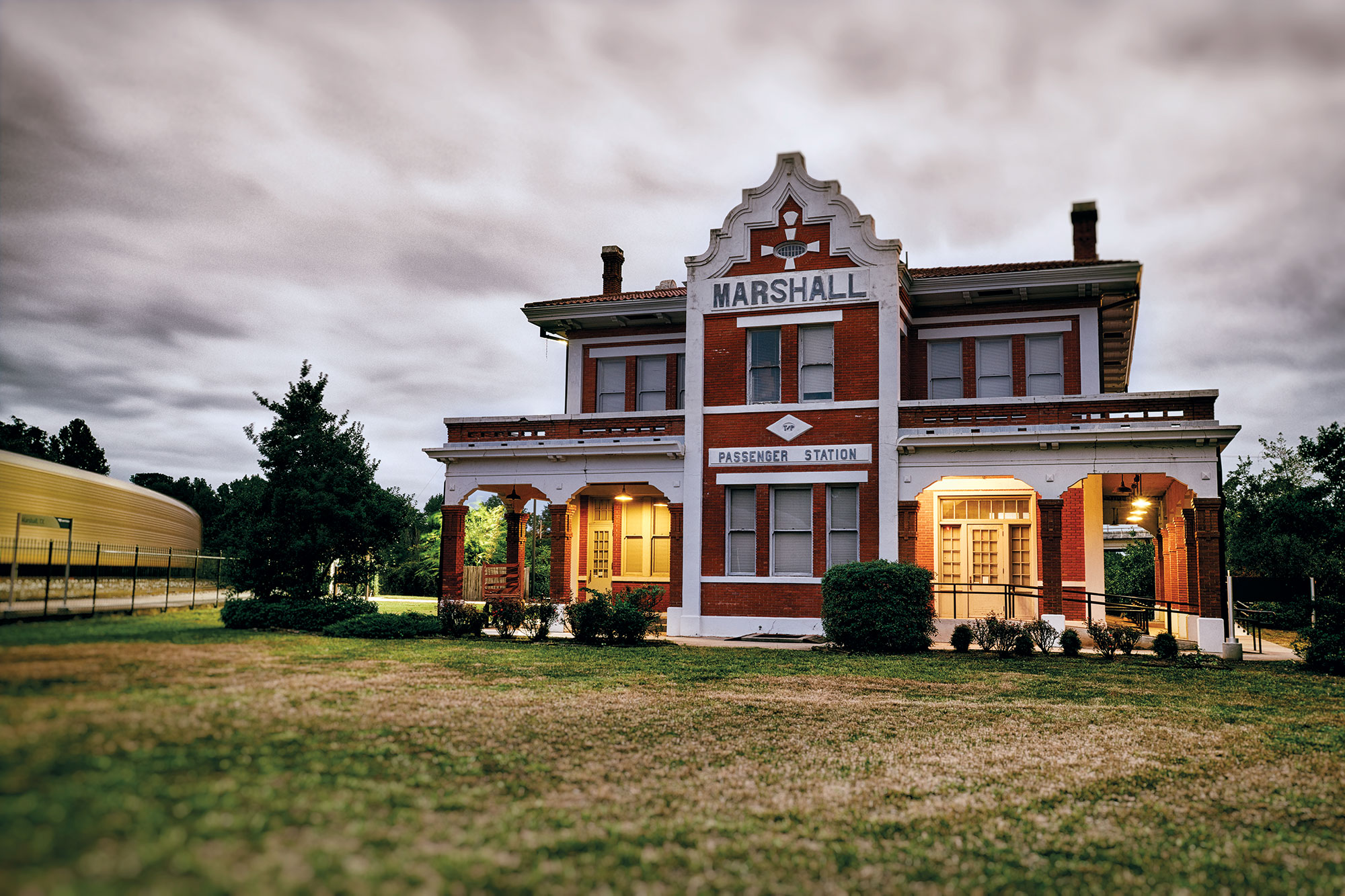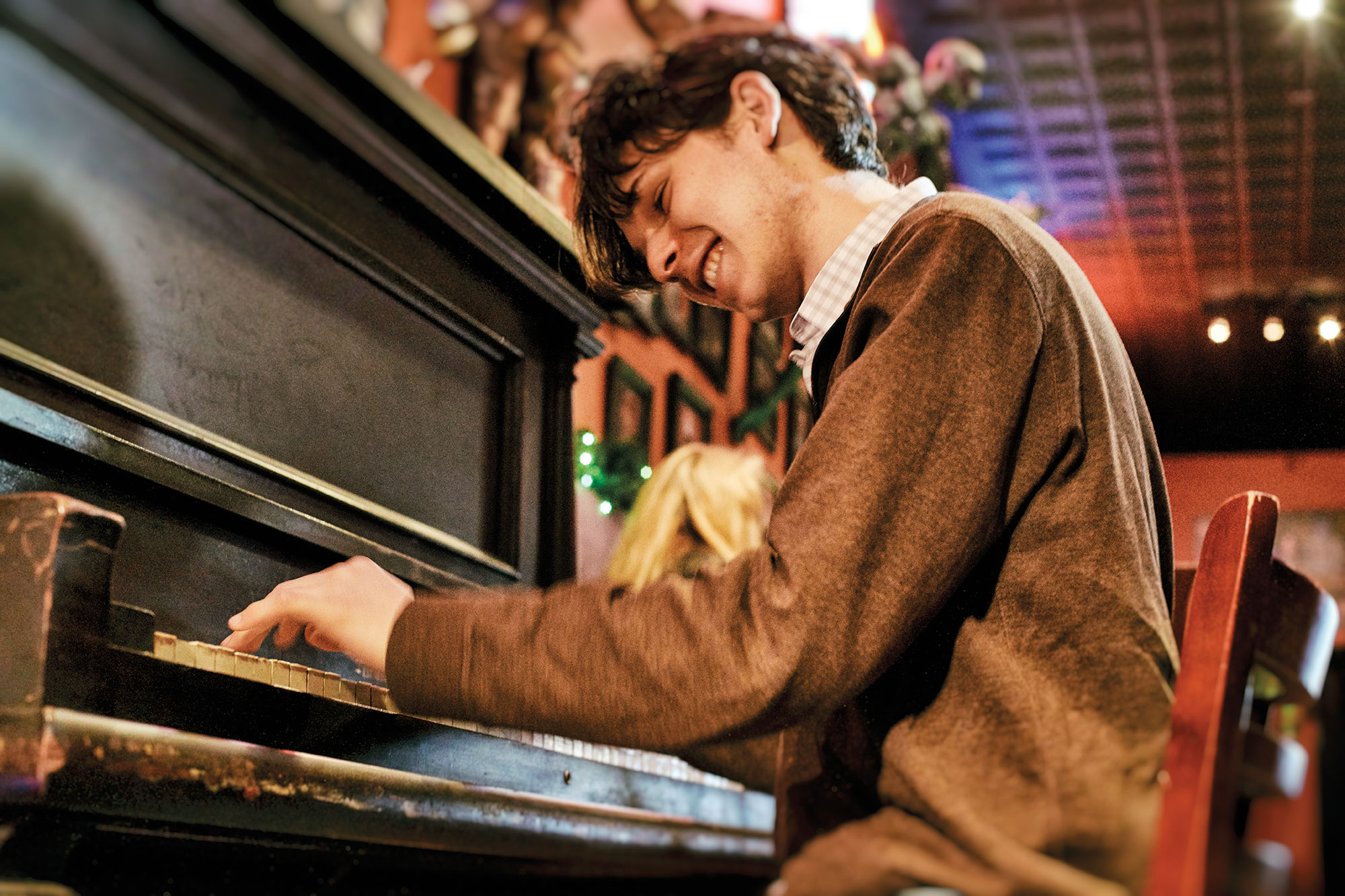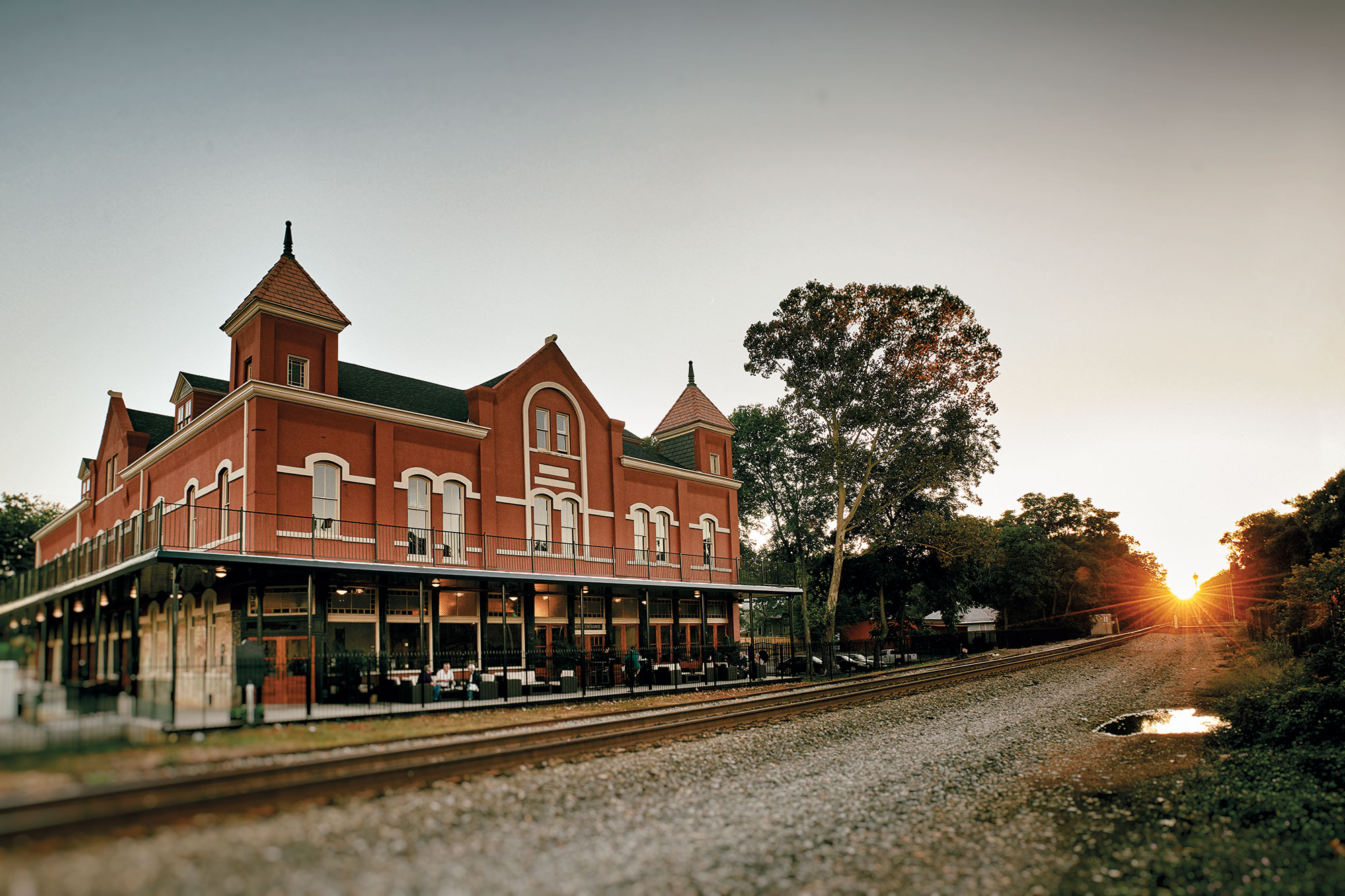The heavy left hand mimicked the rumble of steam locomotives on iron rails, while the right played melodic cross-rhythms that whistled up and down the tracks. A national craze during World War II, the hard-driving piano style known as boogie woogie set the stage for the musical revolution of rock ’n’ roll. And its roots can be traced to the logging camps of East Texas, where former slaves played music for respite from their toils, accentuating the piano’s rhythmic properties to get people dancing.
Defined by a walking bass line—a repeating sequence of notes that propels the rhythm forward—boogie woogie is the music of movement, perfect for a road trip through the glorious Piney Woods where the style originated. Musicologist John Tennison has dubbed a 280-mile stretch of US 59 between Houston and Texarkana the “Boogie Woogie Highway.”
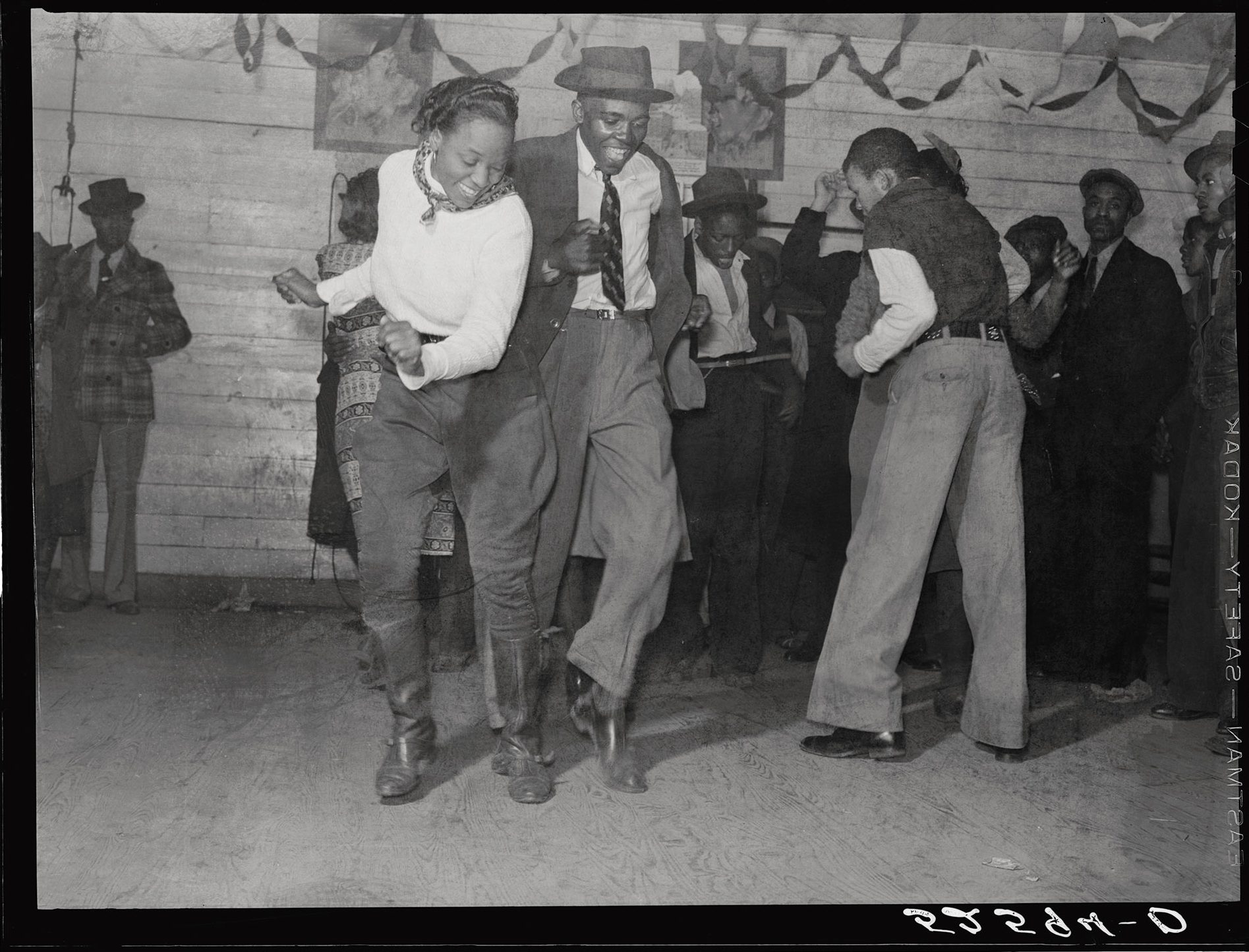
“It was African Americans who originated boogie woogie, and they were in the Piney Woods of East Texas in association with the railroad and lumber camps,” says Dr. Tennison, a Texarkana native who now lives in San Antonio, where he works as a psychiatrist and plays a mean piano. “Highway 59 is the most reasonable approximation of the railroad corridor, but it was the railroad completed in 1873—from Texarkana to Houston—that the itinerant musicians would have used.”
Tennison became interested in boogie woogie’s Northeast Texas origins as a teenager. He interviewed local musicians and historians, and combed through oral histories and other resources to explore how African Americans developed the piano style. Boogie woogie came about in the 1870s during the East Texas timber bonanza of the late 1800s and early 1900s, when Eastern logging companies discovered the region’s abundant pine forests. Coinciding with the end of the Civil War, the companies employed freed slaves in jobs like felling trees and building new railroad mainlines, spurs, and taps to move the timber to mills and markets.
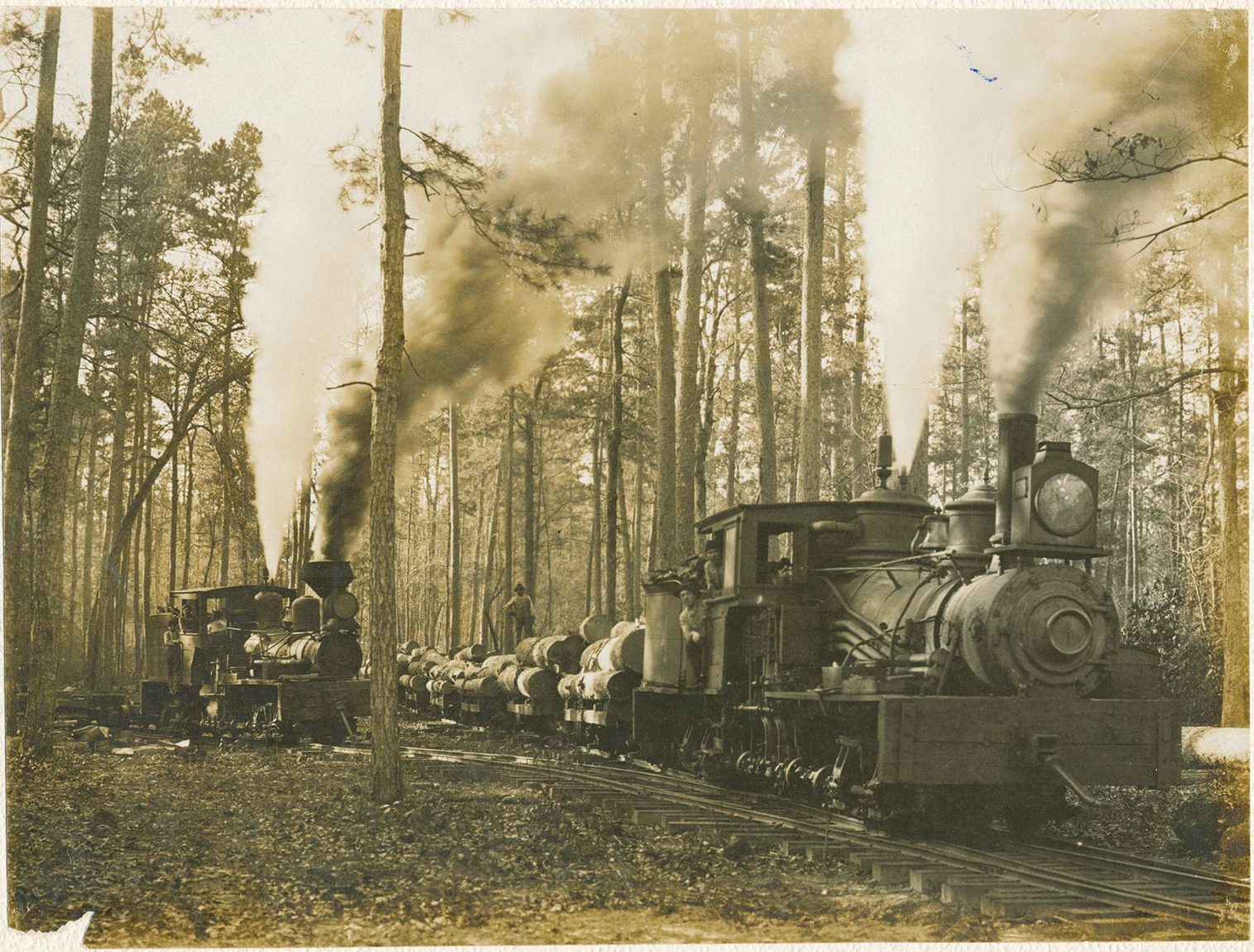
Life in the lumber camp was filled with the clatter of rhythmic hammering and the chuff of steam engines. Tennison notes that boogie woogie’s classic eight-beats-per-measure bass line mimics two rotations of a steam engine driver wheel. Untutored ivory-smiths rode the rails from camp to camp to play in barrel-houses, which the lumber companies built to keep their workers from straying into town—and maybe never coming back. These makeshift juke joints hosted parties sometimes called “booga roogas” with liquor, dice games, and dancing. In 1929, Alabama pianoman Clarence Smith gave the style its name with his hit song “Pine Top’s Boogie Woogie.”
Tennison presented his research to the Marshall City Council in 2010 to make the claim that the Harrison County seat, as headquarters of the Texas & Pacific Railway, could rightfully be considered “the birthplace of boogie woogie.” In the first half of the 20th century, music historians had pegged East Texas as the original home of the rhythmic style. Within the region, Tennison said, three key factors overlapped to the highest degree in Marshall—Harrison County’s large African American population, the Piney Woods timber industry, and Marshall’s status as a railroad trade hub. The city of around 24,000 has taken the motto to heart; in September, Tennison joined Marshall officials in unveiling a state historical marker declaring the city as boogie woogie’s birthplace.
“You can’t really pinpoint any one place where boogie woogie started, but Marshall lies at the geographical center of gravity, spreading the music along the railroad tracks running north and south,” Tennison says, adding that one of the earliest boogie bass lines was called “The Marshall.” Legendary Marshall street singer Leadbelly, from nearby Caddo Lake, was among the first to play such bass figures on the guitar. When a heavy backbeat was added, you had
rock ’n’ roll.
Time to cue up the boogie woogie, blues, and rock ’n’ roll on the car stereo and hit the road: The Boogie Woogie Highway calls.
Houston
Houston’s George Thomas Jr. took boogie woogie from the backwoods to urban centers in the 1910s. His composition “The Fives,” which he wrote with his younger brother, Hersal, helped shape boogie woogie into its own style in the 1920s. According to Peter J. Silvester’s essential boogie woogie history, A Left Hand Like God, Thomas was the first to publish walking bass lines in sheet music in 1916.
Though Houston’s blues landmarks have mostly been torn down, the music is still alive on Kirby Drive, not far from Rice University, at The Big Easy Social & Pleasure Club, which sometimes draws piano players to its Wednesday night blues jam. Sundays belong to zydeco, which often incorporates boogie woogie’s walking bass line.
“Essentially if you go to any blues club in Texas, and there’s a piano player, almost certainly they’ll play some boogie woogie or something close to it,” Tennison says.
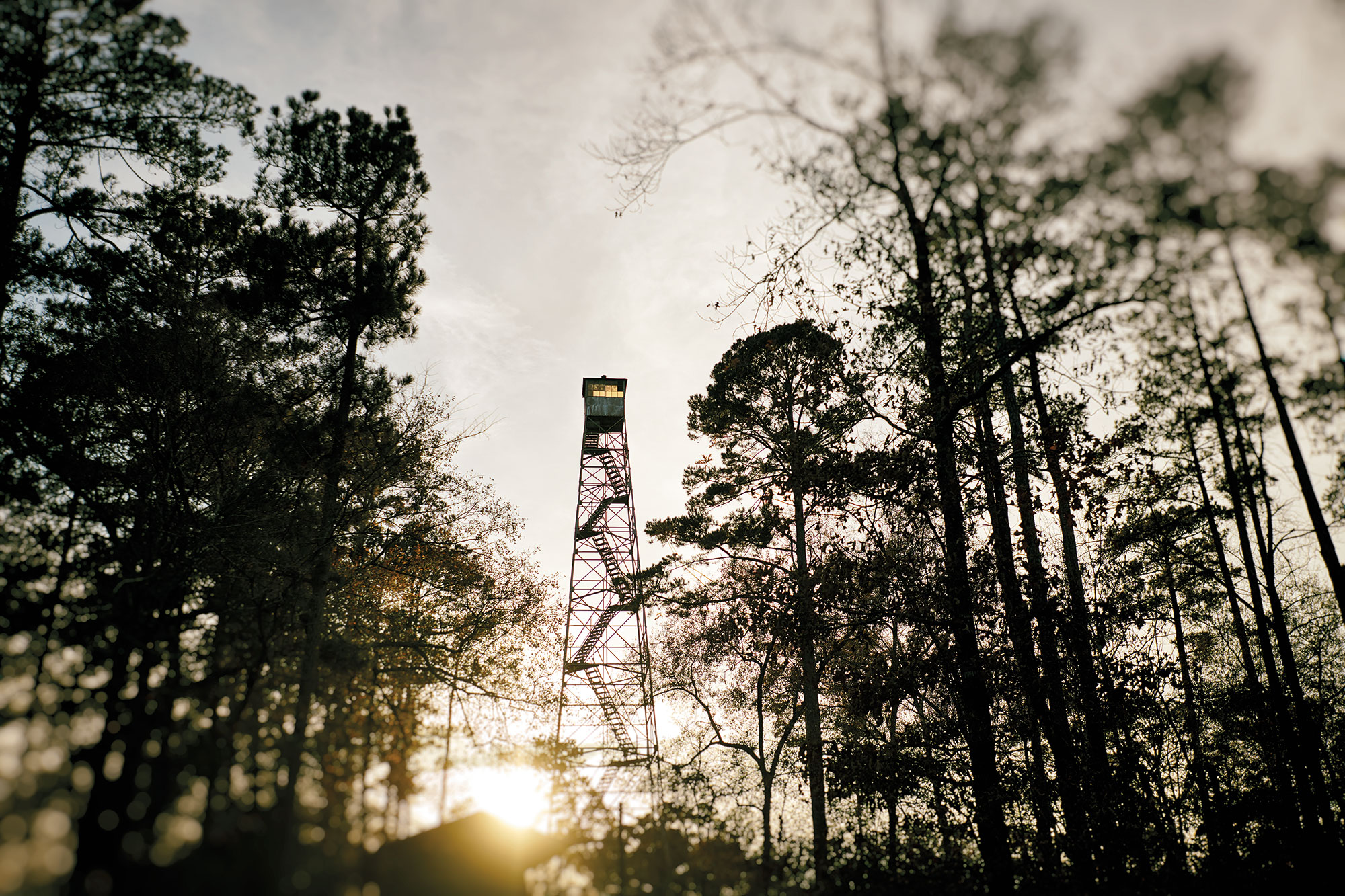
Diboll and Lufkin
Lumber and railroads, as dependent on each other as hands on a piano, were instrumental in the creation of this new forceful style of blues. Built in 2003 to house the archives of lumber magnate Arthur Temple and other local companies, The History Center in Diboll explores both industries with exhibits of historic photographs, audio recordings, and artifacts such as a vintage 6-foot crosscut saw. The center also keeps a thick file on local African American piano thumper W.J. “Professor” Jackson, who died in 1972 at age 102. Jackson also played the trumpet in circus bands, which is how he met Harry James, a boy from Beaumont whom he taught to play jazz trumpet. James went on to become one of the superstars of Big Band, with his 1939 single “Back Beat Boogie” presaging
rock ’n’ roll.
Just 14 miles north on US 59, Lufkin’s Texas Forestry Museum preserves the history of the 14 million acres of East Texas Piney Woods that dominated the regional economy in the late 1890s and early 1900s. The museum’s vintage equipment—including a high-wheeled cart and a sawmill steam engine—help portray how timber was logged, transported, and milled during the bonanza days. The exhibits also depict life in sawmill towns and logging camps, where workers scratched out a tough life and were often paid in “scrip”—credit for goods at the company store—rather than cash.
Rusk
Both The History Center and the Forestry Museum have steam locomotives on display for visitors to explore, but for a ride on a living, snorting model, you’ll want to veer northwest on US 69 to Rusk, home of the Texas State Railroad. The tourist railroad runs steam and diesel locomotives, leading several elegant passenger cars on 50-mile round trips to Palestine. The journey is both spiritual and educational, with forested scenery and a Neches River bridge that’s nearly four football fields long and 35 feet tall. During spring, the dogwoods and red sumacs are in bloom.
Prison inmates built these tracks more than 100 years ago. As the train clacks along, listen to the vintage locomotive rumble over the tracks: Can you hear the rhythm that inspired boogie woogie and the well-known tune, “The Boogie Woogie Bugle Boy of Company B”? The 1941 Andrews Sisters’ smash turned left-hand fever into an epidemic.
Marshall
Back on US 59, the Boogie Woogie Highway heads north to Marshall, where it reaches its anchor at the end of North Washington Street. There stands the historical marker chronicling Marshall as the hub of boogie woogie, with the still-busy 1912 Texas & Pacific Railway Depot in the background and the beautifully restored 1896 Ginocchio Restaurant and Hotel in the foreground. Though the Ginocchio’s top two floors are no longer a hotel, the restaurant has been a big draw since opening in late 2017. With plates of steak and seafood, diners can watch the trains pass and sip on glasses of house-brewed Boogie Woogie Golden Ale.
There isn’t much live boogie woogie in Marshall these days, but its influence is reflected at the OS2 Pub, which hosts musicians on Boogie Woogie Wednesdays. The pub launched the event in 2010 when Marshall invited noted pianist Omar Sharriff back to his hometown as its “artist in residence.” Sharriff died in 2012, but Boogie Woogie Wednesdays carried on. You can hear traces of boogie woogie’s distinctive bass patterns in the bands that play these days, but they’re often played on the guitar rather than the piano.
Marshall’s interest in boogie woogie has made a mark on younger residents, as well. Eighteen-year-old Benjamin Cohen first heard boogie woogie a few years ago at a special event held at OS2 featuring European pianist Eeco Rijken Rapp.
“It was amazing, and I fell in love with it the minute I started to hear it,” says Cohen, a student at East Texas Baptist University. “I thought, I could do something like this.”
Cohen has been studying boogie woogie ever since and recently started performing around town. “I like faster-paced rhythms and beats,” Cohen says. “I grew up listening to a lot of rock ’n’ roll, and I guess you could say it followed the rules of a lot of the music I grew up hearing.”
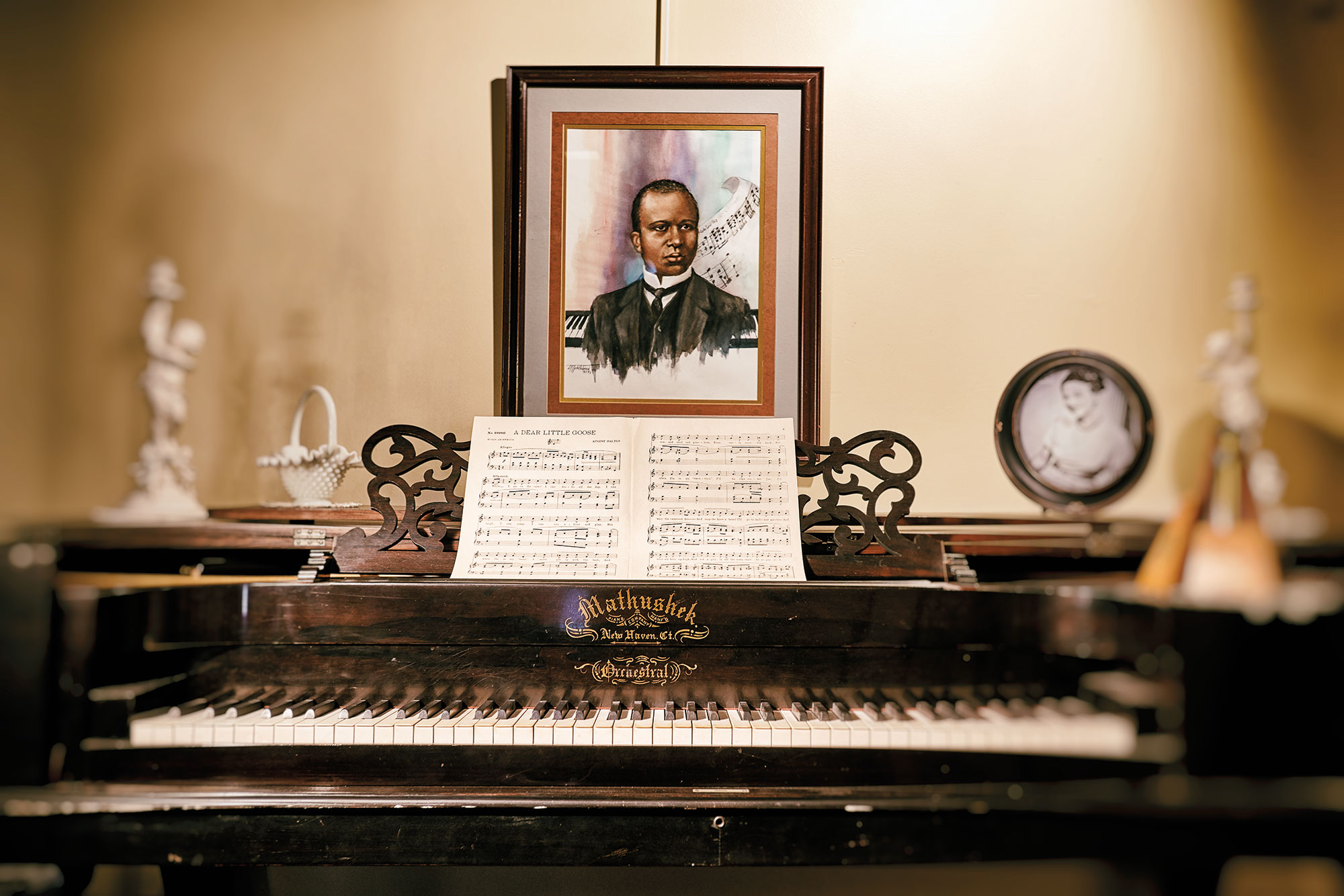
Texarkana’s Scott Joplin
Texarkana is the northern terminus of the Boogie Woogie Highway, but the city’s most famous musical son found his voice in a different style of late-19th century piano. Scott Joplin didn’t invent ragtime—a direct precursor of jazz—but he was certainly its most accomplished and prolific composer. Joplin’s 1899 sheet music for “Maple Leaf Rag” was the archetype for many a piano composition in the next century.
Although ragtime contains some of the melodic properties of boogie woogie, it’s a more structured style that has no use for improvisation. Boogie woogie is all about those pulsing bass lines, while ragtime is defined by syncopated melodies that dislocate the expected beat.
Boogie woogie flourished in Texarkana’s Swampoodle neighborhood, but Joplin said he learned to play piano at a house his mother, Florence, cleaned. Texarkana’s Museum of Regional History displays the piano believed to be the same one, an 1870 Mathushek that matches Joplin’s description of the square grand piano he once played. The instrument belonged to the Wilder family on the 700 block of Hazel Street, whose house Florence kept.
Other Joplin-related points of interest in Texarkana include the Orr School he attended as a boy on the Arkansas side (now a vacant building), plus the colorful 16-foot tall and 115-foot wide mural at 311 Main St., which was painted in 1984 and redone in 2015 as part of the Perot Theater and Art Park Restoration Project.
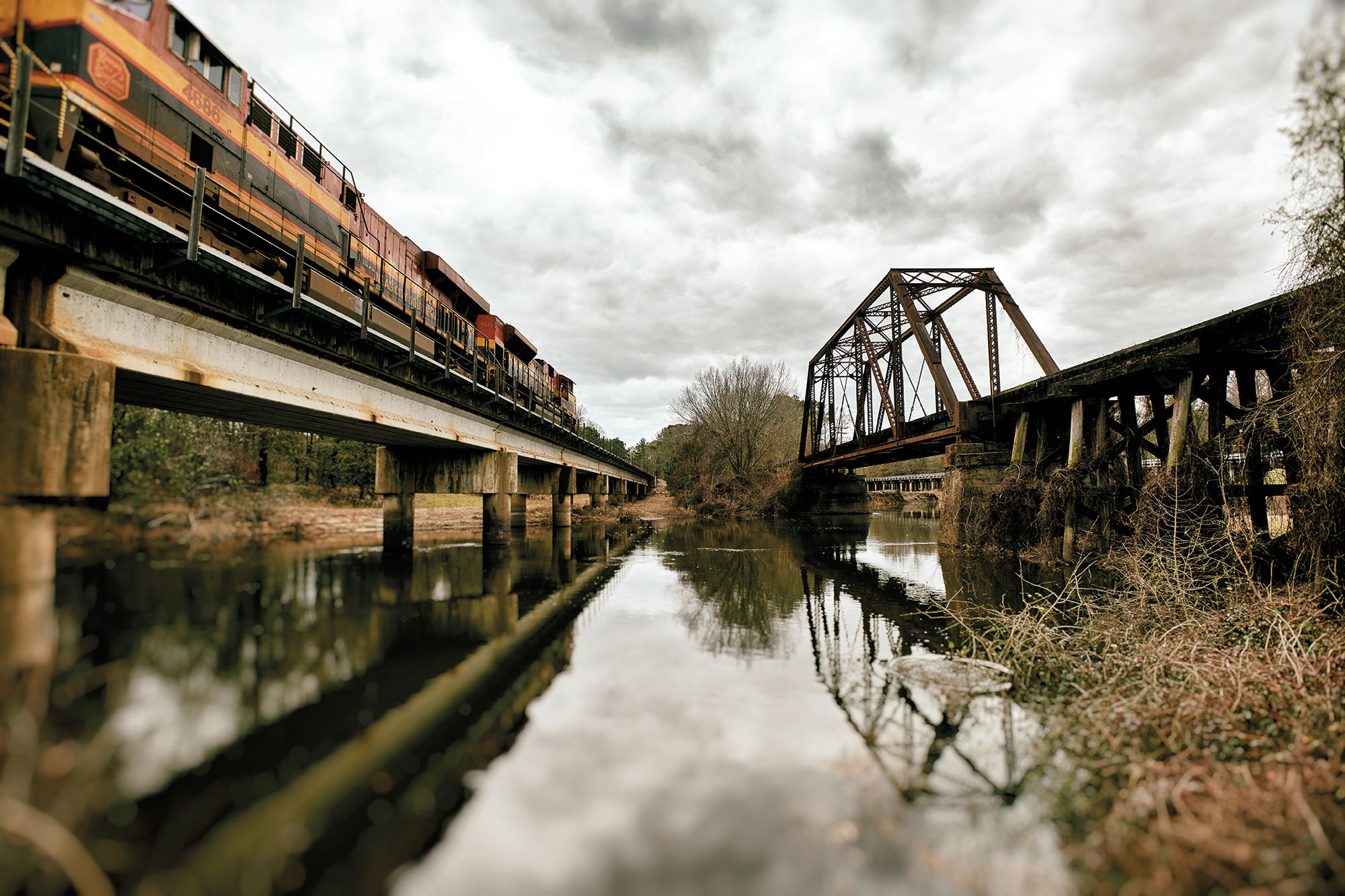
Jefferson and Texarkana
From Marshall to Texarkana, US 59 runs roughly parallel to the Texas & Pacific Railway, a corridor where prominent boogie
woogie bass lines were developed, according to Tennison. “The Jefferson” bass line bears the influence of New Orleans, the origin point for steamboats that ferried people and goods to Jefferson on Big Cypress Bayou. While the railroad initially bypassed Jefferson, trains soon arrived, and the industry’s influence runs deep, as is illustrated by the restored 88-foot railroad car displayed on Austin Street. Called “The Atlanta,” the lavish car was built to the specifications of rail tycoon Jay Gould, who owned the Texas & Pacific.
US 59 ends its Texas run at Texarkana, whose most prominent former resident, Scott Joplin (1868-1917), made his mark not in boogie woogie but in ragtime. “Scott Joplin is a good example of someone who could’ve played boogie woogie but saw it as something as symbolizing sex and gambling and sin,” Tennison says. “With ragtime, he was trying to elevate the music and the value of education.”
Joplin likely never stepped foot in Texarkana’s Swampoodle district, where the pounding strains of boogie woogie emanated from rowdy juke joints and bawdy sporting houses. No trace remains of Swampoodle—named for Swampoodle Creek—but the notorious era, from the 1880s to around 1910, lives on in the Swampoodle bass line, an eight-beat line that’s instantly recognizable as a foundation of boogie woogie.
You can hear the magic, hypnotic drive of boogie woogie in the music of masters like Sharriff and Stevie Ray Vaughan, who spread Texas blues to the world. And it all traces back to the forest clearings from Cass to Bowie counties, where the clatter of steaming locomotives provided musical themes and polyrhythmic inspiration. It was here that the left hand made its mark in a right-handed world and led to the creation of what we call rock ’n’ roll.
